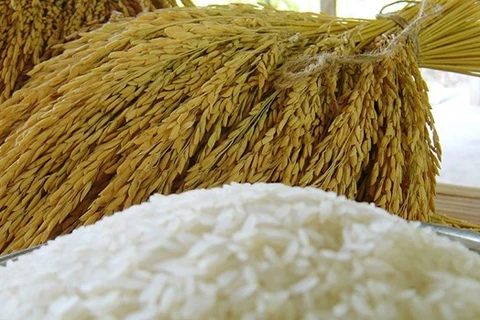Hanoi (VNA) - The Thai baht was the worst performer among commonly traded Southeast Asian currencies during the first quarter of 2021, the Nikkei Asia Review cited Refinitiv, a global provider of financial market data and infrastructure.
The baht depreciated 4 percent against the US dollar to 31.24, standing out from regional peers, which also were in decline. It reached the cheapest level in roughly half a year on December 31.
Thailand’s weakening fundamentals led to the drop.
The country's current account turned to a deficit of 1.4 billion USD in Q4 of 2020 from a surplus of 6.6 billion USD in Q3 and 11.5 billion USD in the same period of the previous year. It was the first time Thailand has recorded a deficit since Q3 of 2014, according to the Bank of Thailand.
Service receipts from tourists, an important contributor to the current account surplus, plunged to 742 million USD in Q1 this year, only 5 percent of the same period a year ago, because of border closures in response to the coronavirus pandemic.
Starting April, Thailand will shorten its mandatory quarantine from 14 days to 10 days to revive tourist inflow and spending, according to the Nikkei Asia Review.
The fall was also magnified by a seasonal factor. Local affiliates of large Japanese companies repatriated some of their cash before Japan's fiscal year closed in March.
The depreciation at the current pace may not cause a headache for the government. When the baht hit a seven-year high in December 2020, the Thai Government was concerned about the adverse impact on industrial exports.
Among other regional peers, the Indonesian rupiah and Malaysian ringgit fell 3.4 percent and 3.1 percent respectively in Q1. The Singaporean dollar and Philippine peso also fell over 1 percent./.
The baht depreciated 4 percent against the US dollar to 31.24, standing out from regional peers, which also were in decline. It reached the cheapest level in roughly half a year on December 31.
Thailand’s weakening fundamentals led to the drop.
The country's current account turned to a deficit of 1.4 billion USD in Q4 of 2020 from a surplus of 6.6 billion USD in Q3 and 11.5 billion USD in the same period of the previous year. It was the first time Thailand has recorded a deficit since Q3 of 2014, according to the Bank of Thailand.
Service receipts from tourists, an important contributor to the current account surplus, plunged to 742 million USD in Q1 this year, only 5 percent of the same period a year ago, because of border closures in response to the coronavirus pandemic.
Starting April, Thailand will shorten its mandatory quarantine from 14 days to 10 days to revive tourist inflow and spending, according to the Nikkei Asia Review.
The fall was also magnified by a seasonal factor. Local affiliates of large Japanese companies repatriated some of their cash before Japan's fiscal year closed in March.
The depreciation at the current pace may not cause a headache for the government. When the baht hit a seven-year high in December 2020, the Thai Government was concerned about the adverse impact on industrial exports.
Among other regional peers, the Indonesian rupiah and Malaysian ringgit fell 3.4 percent and 3.1 percent respectively in Q1. The Singaporean dollar and Philippine peso also fell over 1 percent./.
VNA
























